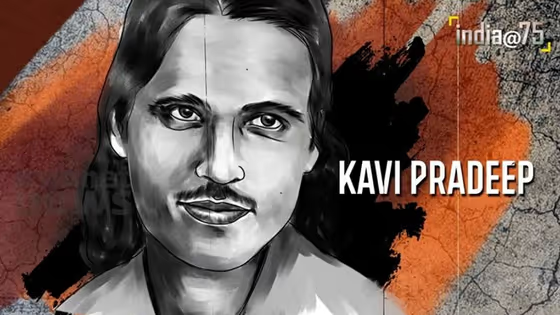
India@75: Story of Kavi Pradeep, who created songs that espoused nationalist spirit
Born in Ujjain, Madhya Pradesh, Pandit Ramachandra Narayanji Dwivedi was the actual name of Kavi Pradeep.
Unlike other cultural forms, the Indian cinema industry did not deeply get involved in the independence struggle. But there is a film lyricist and a composer who faced arrest warrants for creating songs that espoused nationalist spirit. They are the poet lyricist Kavi Pradeep and composer Anil Biswas.

1943. Quit India struggle storms the country. A new film Kismet directed by Gyan Mukherjee is released. Ashok Kumar was the hero. A group song in the film electrified the audiences already charged with the nationalist fervour.
Door Hato ae duniyawalon Hindustan hamara hein was the song. Hei, foreigners, keep out, Hindustan is ours. It was the same message of the Quit India movement. The song became the movement’s favorite chant. The British authorities issued warrants top both Pradeep and Biswas.
Born in Ujjain, Madhya Pradesh, Pandit Ramachandra Narayanji Dwivedi was the actual name of Kavi Pradeep. His song Chal Re Naujawan penned for the film Bandhan in 1940 too provided much energy to the national movement.
Pradeep’s songs had inspired patriotism during the post-independence period too. Prominent among them was the immortal song sung by Lata Mangeshkar. Ye Mera Watan ka logon.
The song was penned and sung at a function in Delhi to raise funds for the widows of martyrs who laid down their lives in the Indo-Sino war of 1962. The song brought tears to the eyes of Prime Minister Jawaharlal Nehru, who attended the function along with President Dr S Radhakrishnan.
Pradeep wrote about 1700 songs during a five decades-long career. He was presented with the Dada Saheb Phalke award, the highest honour in cinema industry in 1997. Kavi Pradeep passed away next year at the age of 83.
Also watch:
India@75: Story of VOC Pillai, the patriot who 'steered the ship'